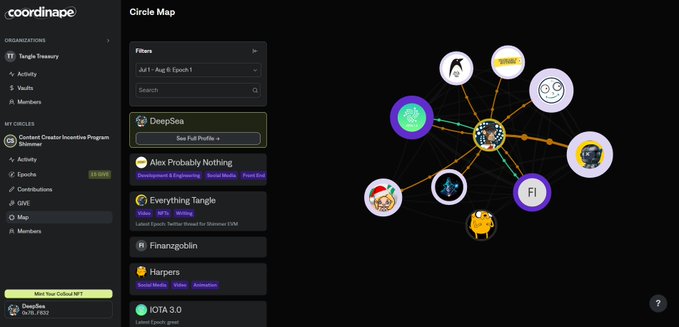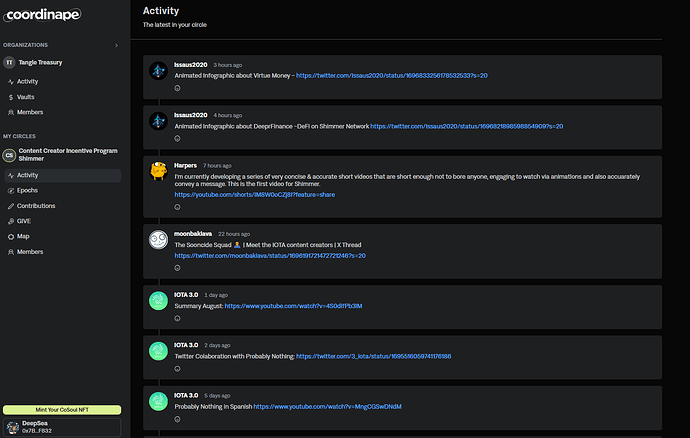We can create a structured, rigid, and granular framework for investing idle funds; however, we just found from operating the treasury that having a rigid, structured, and granular framework is inefficient and causes challenges. Does this mean we propose revising the committee framework to be non-transparent and free with no oversight or repercussions? No, it gives a bit of freedom to the committee to work in the changing environment and some flexibility, but always maintains 100% transparency.
Let’s look at managing funds as the incentive of performance. Three Arrows Capital was a hedge fund that provided risk-adjusted returns, and then there is Alameda Research. Both were accredited, trusted, high-end, multi-billion dollar funds that incentivized positive performance. Standard & Poor’s states that nearly 90% of fund managers fail to beat the market. Several research studies have shown mutual funds (which endowment funds often use) regularly lose against index funds and charge exorbitant fees. Index funds match the market and charge about 75% to 95% less management fees than mutual and hedge funds. Yet why are mutual funds and hedge funds used? It’s not from sound financial management and the basis of the individual or endowment; it is because traditional finance is broken. Though these hedge funds and mutual funds regularly do not beat the market or index funds, somehow they make hundreds of $billions of dollars in profits. That’s not from the success of their client’s funds; that is a broken traditional financial system.
Regarding the specific questions of having the committee invest, we could ask the same detailed questions to the committee when it comes to approving grants. How could a grant committee make sound judgments to fund projects they are not experts on? We could also farm our grant committee out to a VC company and pay them hefty fees if we wanted to. Yet, a VC firm would not conduct extensive research within our community or operate transparently.
Yet this is what the community grant committee representatives do. We operate fully transparently and in collaboration with the community. For example, particularly for TCT-12 Identity Wallet by Impierce. No committee member is experienced in Digital Identity, given its niche and specialized market. We didn’t simply make an uninformed and un-analyzed decision, though. Instead, we spent weeks discussing with Identity experts in and out of the IOTA Foundation, small and large global projects that work with digital identity, and also community identity experts and non-experts. We then aggregated all these subject-matter-experts information and community non-expert advice and reviewed all the relevant information to decide. This same collaborative and transparent process seeking experts and non-experts would be the decision-making process.
Another more financially related example is the treasury currently working with DEFI projects to support liquidity pools, specifically, the DEFI space take-off. This venture has been over four months of research, talking with DEFI subject matter experts, project owners, IF and non-IF members, and community members. We asked all these parties what risks could arise with this grant, what positives and negatives may occur, how to mitigate risks, and what is best for the community ecosystem to expand it positively. The results were:
→ Ecosystem Expansion: There are many ways to support DEFI take-off; however, the most important way to support this growth, agreed by nearly everyone, was simply a good liquidity pool.
→ Positive: A focused, safe liquidity pool that will support the DEFI eco-space and expand to a point where it grows organically. The treasury will also gain some yield and additional LP token assets.
→ Negative: The treasuries assets used in these liquidity pools will lose value and or not support the growth of the DEFI ecosystem because the liquidity is not large enough.
→ What Risks Are There:
- There is a risk of losing a significant valuation due to impermanent loss.
- There are risks of the DEFI platform having no use, being rugged, or the platform’s loss of funds.
- Platforms Smart-Contract error that losses liquidity pool funds.
- Tether company rumors becoming true and USD backing not being actual as reported, such as the USDT token de-pegging.
→ How to mitigate these Risks:
- Hold token pairs that maintain the least risk, which includes ($SMR:USDT/USDC & $IOTA:USDT/USDC), and or, if there is not a USDT/USDC, allocate fewer funds.
- Allocate funds to projects with a strong community history, are Dox’ed, and have a solid positive reputation.
- Ensure each platform uses SCs that have been audited and tested thoroughly on the Beta, Alpha, and community testnet.
- Use USDC as a pair and USDT to mitigate the risk of de-pegging.
Again, the main point is that the committee doesn’t take these decisions lightly or make them independent of the community. We make these decisions openly and transparently.
Look at where the crypto industry is today, precisely due to the lack of transparency and the “trust” that was put into so-called “experts/fund managers” like Celsius, Alameda, FTX, etc. Any of those trad-fi companies, “if” they were transparent, everyone would have seen the corruption and pulled their assets out. The point is that due to transparency, those trade-fi fund managers couldn’t have made those corrupt and irresponsible financial moves with customer funds. It was only because of the lack of transparency that such corruption occurred. Though guaranteed, when markets fall into a bear market, all those fund managers seek customer portfolio increases and thus large bonuses. For that, they took extreme risks and made corrupt decisions.
I enjoyed the old comparisons of a decentralized network to bees. Bees make collective decisions that help them address various challenges and community infrastructure decisions. The adage of two minds is better than one. All these principles work in asset management companies but fail due to the lack of transparency and corruption. The Shimmer and IOTA community has some of the most talented individuals. It collectively can manage their community funds together, or at a bare minimum, should be given a chance to. The days of corrupt hedge and mutual funds should be over, and we have an opportunity to show how.

